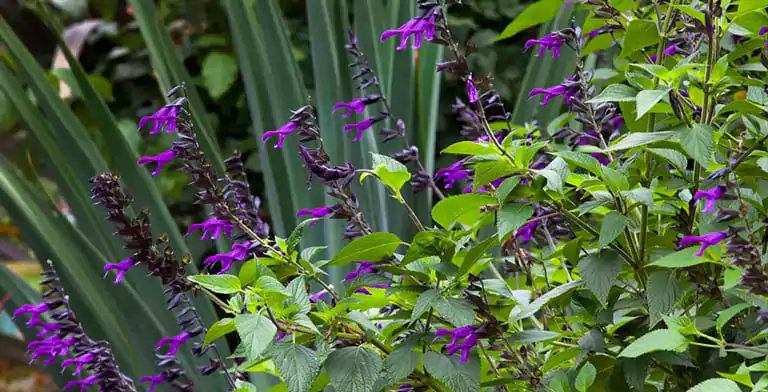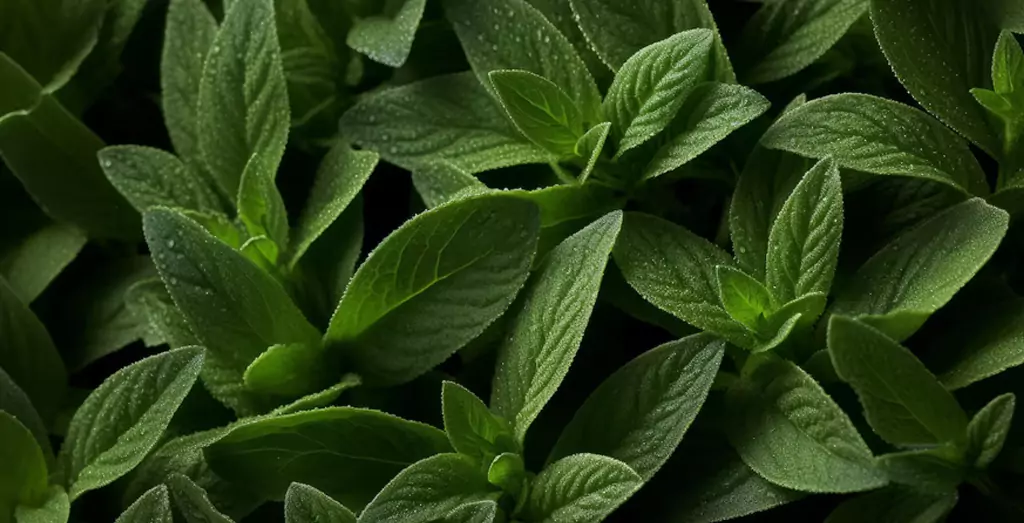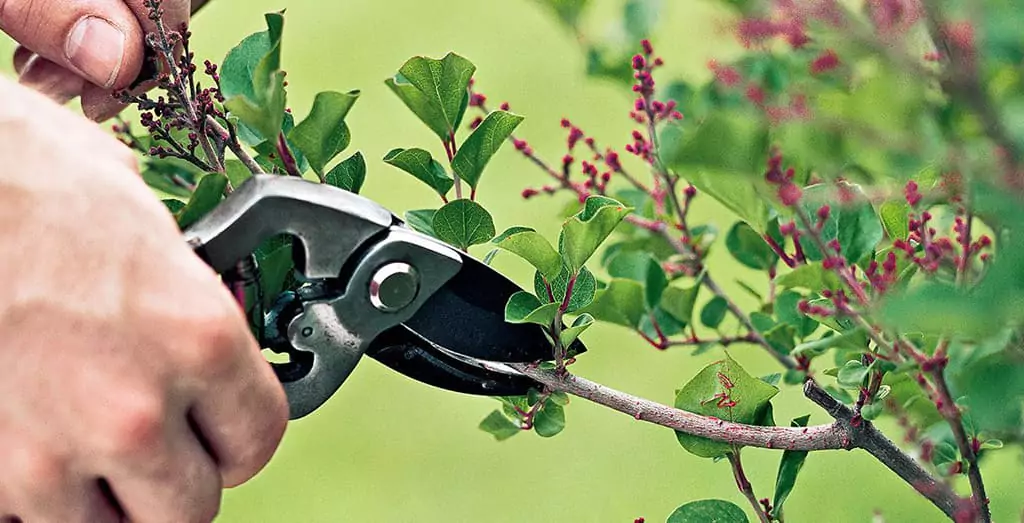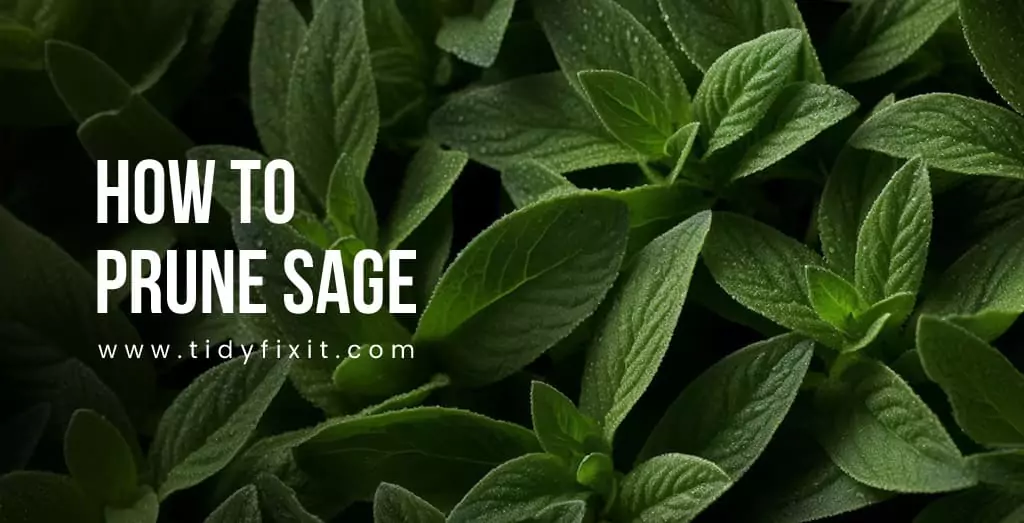To prune sage, trim back the plant by cutting the stems just above a set of leaves. Proper pruning helps stimulate growth and maintain the plant’s shape.
Sage is a versatile herb that is prized for its fragrant leaves and culinary uses. Whether you grow sage in your garden or a pot on your windowsill, it is important to prune it regularly to keep it healthy and productive.
Pruning sage not only helps control its size but also encourages bushier growth and enhances the flavor of the leaves. By following a few simple steps, you can keep your sage plant in tip-top condition and enjoy its aromatic qualities for a long time.
Choosing The Right Time
Pruning is an essential task for keeping your sage plant healthy and ensuring a bountiful harvest. One crucial aspect of pruning sage is choosing the right time to do it. Proper timing will promote strong growth and enhance the flavor of the leaves. In this article, we will explore the two prime seasons for pruning sage: spring and summer.
Spring Pruning
Spring is an ideal time to prune your sage plant to encourage fresh growth. As the weather starts to warm up and new shoots emerge, it’s the perfect opportunity to trim away any dead or damaged branches. Pruning sage early in the spring also helps prevent overgrowth and keeps the plant in a more compact shape.
When spring pruning, it’s essential to remove any woody stems and branches that are no longer productive. These woody stems can hinder new growth and reduce the overall productivity of the sage plant. With a pair of sharp pruning shears, make clean cuts just above a healthy leaf node or bud. This will stimulate new growth and ensure your sage plant thrives throughout the season.
Summer Pruning
Summer pruning is another crucial step in maintaining the health and vigor of your sage plant. During the summer months, sage can become bushy and overgrown if left unattended. By pruning in the summer, you can manage the plant’s size, prevent it from shading other herbs, and encourage good airflow, reducing the risk of diseases.
When summer pruning sage, focus on removing any excessive growth and spent flower stems. By doing so, you redirect the plant’s energy towards producing new leaves and extending its overall lifespan. Trim back the long branches and harvest any leaves as desired to promote continuous growth and maintain a tidy appearance.
Remember, whether you are pruning in the spring or summer, it’s crucial to use sharp and clean pruners to prevent the spread of diseases. Also, avoid pruning sage plants too late in the season, as it may interfere with the plant’s ability to harden off and survive winter. By selecting the right time for pruning sage and following proper techniques, you will help your sage plant thrive and provide you with a flavorful herb throughout the season.

Credit: southernlivingplants.com
Related Post: How to Clean Monstera Leaves
Related Post: 4 Best Low Light Hanging Plants for Indoor
Preparing The Tools
To prune sage effectively, start by gathering the necessary tools, including sharp garden shears, gloves, and a clean cloth for wiping the blades. Properly preparing your tools ensures a clean and precise pruning process for your sage plants.
Sterilizing Tools
Before you start pruning your sage plant, it is crucial to sterilize your tools to prevent the spread of disease. Sterilizing your tools ensures that any bacteria or pathogens on them are eliminated, keeping your plant healthy. Here’s how you can do it:
- First, gather a bucket of warm soapy water and a clean cloth.
- Using the cloth, wipe down the blades of your pruning shears to remove any dirt or debris.
- Next, dip a clean cloth or paper towel in rubbing alcohol.
- Wipe down the blades, handles, and any other parts of your pruning shears with the rubbing alcohol.
- Allow the tools to air dry or use a clean cloth to dry them thoroughly.
By following these simple steps, you can ensure that your tools are free from any harmful bacteria or pathogens, minimizing the risk of infecting your sage plant.
Gathering Equipment
Once your tools are sterilized, you’ll need to gather a few other equipment to make your pruning process easier. Here’s what you’ll need:
- Gardening gloves: Protect your hands from thorns and prickly stems by wearing sturdy gardening gloves.
- Pruning shears: Invest in a high-quality pair of pruning shears with sharp, clean blades. This will make your pruning task easier and help you achieve clean cuts.
- Hand pruners: For smaller branches or stems, hand pruners will come in handy. Make sure they are sharp and in good working condition.
- Loppers: If you have larger, woody stems that need pruning, loppers can provide the additional strength required to make clean cuts.
- A bucket or garden waste bag: Prepare a bucket or bag where you can collect the pruned branches and leaves for easy disposal later.
Having these tools and equipment ready will ensure that your pruning process goes smoothly and efficiently, allowing you to maintain the health and shape of your sage plant effectively.
Related Post: Best 7 Tips to Keep Birds from Eating Grass Seed
Related Post: 5 Best Tips for How to Keep Bugs Out of Garden
Identifying The Pruning Method
Pruning is an essential task for maintaining the health and appearance of your sage plants. By identifying the right pruning method, you can ensure that your sage stays vibrant and productive throughout the seasons. There are three main pruning methods to consider when it comes to sage: Renewal Pruning, Pinching Back, and Harvest Pruning.
Renewal Pruning
If your sage plant is growing old and woody, renewal pruning is the perfect method to revive its growth. This method involves cutting back the plant to its base and removing any dead or damaged wood. By doing so, you encourage new growth and maintain the overall health of the plant. Renewal pruning is typically done in late winter or early spring before new growth emerges.
Pinching Back
Pinching back is a simple yet effective method that helps to control the size and shape of your sage plant. This method involves regularly pinching off the top growth of the plant to encourage bushier, more compact growth. By pinching back the stems just above a set of leaves, you stimulate branching and prevent the plant from becoming leggy. Pinching back can be done throughout the growing season, but is particularly beneficial in the early stages of growth.
Harvest Pruning
Harvest pruning is a method that not only controls the size of your sage plant but also allows you to enjoy its aromatic leaves in your culinary endeavors. This method involves selectively removing individual stems or leaves from the plant for immediate use. By regularly harvesting the leaves, you not only encourage new growth but also ensure that your sage plant remains productive. Harvest pruning can be done throughout the growing season, but it’s best to avoid removing more than one-third of the plant at a time.
Now that you know the different pruning methods available for sage plants, you can choose the one that suits your needs and preferences. Remember to always use clean and sharp pruning tools to minimize damage to the plant. With proper pruning, your sage will thrive and provide you with flavorful leaves for years to come.
Pruning The Sage
Discover the art of pruning sage with these simple steps. Maintain the health and shape of your sage plant by following this easy guide on how to prune sage.

Cutting Back Dead Wood
When pruning sage, it’s important to start by cutting back any dead wood. Dead or dying branches not only detract from the appearance of the plant but can also be a breeding ground for pests and diseases. By removing these unhealthy parts, you’ll help the sage stay robust and promote new growth.
To identify dead wood, look for branches that are brittle or snap easily when bent. They may also appear brown, dry, or withered. Using clean and sharp pruning shears, make clean cuts by removing these dead branches at their base, where they meet the main stem. Remember to dispose of the trimmed branches properly to avoid the spread of any potential diseases.
Creating An Open Shape
Pruning sage also involves creating an open shape to encourage air circulation and sunlight penetration. This helps prevent the development of fungal diseases and keeps the plant healthier overall. To achieve an open shape, follow these simple steps:
- Identify overgrown or crowded areas: Take a close look at your sage plant, and identify any branches that seem overcrowded or intertwined with each other.
- Remove the excess growth: Cut back these overgrown or intertwined branches, making sure to maintain a well-balanced shape. Use your pruning shears to make clean cuts at a slight angle, just above a leaf node or bud.
- Avoid excessive pruning: While it’s important to thin out the plant and create an open shape, avoid removing more than one-third of the plant’s growth. Over-pruning can weaken the sage and hinder its ability to bounce back.
By following these steps, you’ll not only enhance the aesthetics of your sage plant but also promote optimal health and productivity.
Related Post: 5 Tips for Growing Tomatoes in Buckets
Related Post: Indoor Plant Soil Secrets
Caring For Pruned Sage
After pruning your sage plants, it’s important to provide proper care to ensure their optimal growth and health. Caring for pruned sage involves paying attention to watering and fertilizing, mulching, and keeping pests at bay. By following these simple steps, you will be able to sustain a flourishing sage garden. Let’s dive into each aspect of caring for pruned sage in detail.
Watering And Fertilizing
Watering and fertilizing your pruned sage plants correctly is crucial for their well-being. Sage plants prefer well-drained soil, so it’s important to water them adequately to keep the soil moist but not waterlogged. Overwatering can lead to root rot and other diseases, while underwatering can cause the foliage to wilt.
- Watering: Aim to water your sage plants deeply once a week, allowing the water to penetrate the root zone. Ensure the top 2-3 inches of soil are dry before watering again.
- Fertilizing: Feed your pruned sage plants with a balanced, organic fertilizer once every four to six weeks during the growing season. Use a fertilizer low in nitrogen to avoid excessive leaf growth. Applying compost or well-aged manure around the base of the plants also provides beneficial nutrients.
Mulching
Mulching is an essential practice to keep your pruned sage plants healthy and to maintain moisture levels in the soil. By applying mulch around your sage plants, you provide several benefits such as preventing weed growth, retaining soil moisture, and improving overall soil health.
- Choosing the right mulch: Opt for organic mulch such as straw, wood chips, or compost. These mulching materials break down over time, adding valuable nutrients to the soil.
- Applying mulch: Spread a layer of mulch around the base of your pruned sage plants, leaving a small space around the stems to promote air circulation. Aim for a thickness of 2-3 inches.
- Mulching maintenance: Check your mulch occasionally and replenish it if it begins to thin out. Mulch helps control soil temperatures, keeping the roots cool in hot weather and insulating them during colder months.
Pest Control
To maintain healthy pruned sage plants, it’s essential to keep pests under control. Several common pests may harm your sage plants, including aphids, spider mites, and whiteflies. Here are some preventive measures and natural remedies to combat pests:
- Monitoring: Regularly inspect your sage plants for any signs of pest infestation, such as yellowing leaves, distorted growth, or discolored spots.
- Handpicking: If you spot pests on your plants, you can manually remove them by handpicking or using a gentle stream of water to dislodge them.
- Natural remedies: Consider using organic pest control solutions such as neem oil, insecticidal soaps, or companion planting with deterrent herbs like rosemary or lavender.

Credit: www.bhg.com
Frequently Asked Questions Of How To Prune Sage
When Should I Cut Back My Sage?
Cut back your sage in early spring before new growth begins. Prune about one-third of the plant’s height, using sharp, clean shears. Remove any dead or damaged stems, as well as any branches that are crossing or overcrowding. Regular pruning helps maintain the plant’s shape and promotes healthy growth.
Can You Cut Back Woody Sage?
Yes, you can cut back woody sage. Pruning helps keep the plant healthy and encourages new growth. Trim the stems just above a leaf node to promote bushier growth.
How Do You Cut Sage Without Killing The Plant?
To cut sage without harming the plant, follow these steps:
1. Use sharp, clean pruning shears.
2. Cut above the leaf nodes to encourage new growth.
3. Trim up to 1/3 of the plant, leaving enough foliage for it to recover.
4. Avoid excessive pruning during winter or flowering season.
5. Regularly water and fertilize to maintain plant health.
How Do You Keep Sage From Getting Leggy?
To prevent sage from becoming leggy, take the following steps:
1) Provide adequate sunlight.
2) Regularly prune the plant to encourage bushy growth.
3) Maintain a well-draining soil.
4) Water the sage regularly but avoid overwatering.
5) Fertilize sparingly to avoid excessive growth.
How Do You Prune Sage?
To prune sage, use clean and sharp pruning shears to trim about one-third of the top growth, cutting just above a set of leaves. This helps promote bushier growth.
Conclusion
Pruning sage is an essential task that promotes healthy growth and enhances the flavor of this aromatic herb. By following the correct techniques, such as removing dead or diseased stems and regulating their size, you can ensure a thriving sage plant.
Remember to prune regularly and avoid excessive trimming to maintain the plant’s vitality. With these simple tips, you’ll be able to enjoy a bountiful harvest of fresh sage for your culinary delights. Happy pruning!





Pingback: 7 Growth Stages of a Lemon Tree: Cultivating Citrus Success - Tidyfixit
Pingback: 5 Common Bugs in Monstera Soil: The Best Way to Banish Pests Effectively! - Tidyfixit